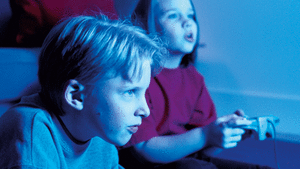Earlier this year in Brisbane, Australia, two boys, barely teenagers, met in the toilet block of their school to resolve a conflict. A blade was produced and, a few minutes later, one left while the other student lay bleeding and dying on the bathroom floor, his heart punctured by a fatal stab.
In the same city a few months earlier, a group of teenagers armed with knives arrived at a school before students finished for the day. Each in the group had a job to do. Some were to herd as many students as possible into a confined area, others to stop any from escaping. They were there to inflict as much damage as possible.
Last year in an Auckland, New Zealand, classroom, a teacher was stabbed in the back while writing on the blackboard. A year earlier, police had to break up fights between as many as 40 students who met in a cul-de-sac on their way to school for a fight and, after a church-run concert two years ago, one student was stabbed to death and another was injured.
In every instance, the scene at the end of the day was the same: terrified students falling into the arms of distraught parents; serious injuries; funerals; teenagers on life-support; students taken into custody and sentenced by courts. The legacy is the physical and psychological wreckage of students and families who now fear what appears to be increasingly random and aggressive acts of violence in schools.
Does our society promote violence? Well, yes, it does. Many video games are marketed to highlight their violence. They offer first-person role-playing in an arena of destructive weapons, killings, kicking, stabbing and shooting.
These games have an emotionalsocial corollary. A new study published in the American Psychological Association journal, Psychological Bulletin, says that there is no more room for doubt. Exposure to violent video games makes players more aggressive and less caring. Researchers say they have proved this conclusively after analysing 130 reports involving more than 130,000 video gamers. Violent video games are bad for those who play them.
Alarmingly, recent reports from eMarketer indicate that males aged 12-24 cite console gaming as their favourite way to pass time. The American Institute on Family and Media reports that 83 per cent of kids aged 8-18 years have at least one video game player in their home; 31 per cent have three or more; and 49 per cent have video game systems in their bedrooms. In fact, 97 per cent of all American teens play video games regularly. If we had a bird's eye view into 97 per cent of homes in Australia and New Zealand, the result would probably be the same.
So, with violent role-playing and fantasy games on the increase, we now see a rise in the rage and violence out there on our streets and in our schools. Students are acting out their anger more than ever before. John Toumbourou, professor of psychology at Australia's Deakin University, cites a study that showed Australian boys are actually carry out more attacks than their American counterparts. "Our data from the study indicated that there's a greater rise in aggressive violence amongst boys in an Australian sample relative to Washington State," he said.
"What difference we did see was that acts of violence-that's attacking someone with the intention to seriously hurt them or having actually attacked someone and hurt them-is much higher in Australia."
The study discovers that the reason for this modern aggressive trait is first born in the dark cocoon of home entertainment violence and escalates into its shockingly deadly outcome in Australia-even more so than in the US. The study found that there was a greater risk factor where adolescents thought that the adults did not care too much about whether young people drank alcohol and used drugs, and when adults failed to prepare preteens and teens for dealing with anger, aggression or anxiety.
"Basically young people in Australia are saying they feel that adults were not concerned about these issues, whereas in the US the kids say the adults are very concerned," says Professor Toumbourou.
It is really an issue of people taking responsibility: What are we doing to entertain ourselves and what are our children doing to entertain themselves? What are we doing to teach our family on how to resolve conflict without resorting to violence of any kind? It's first about learning and then teaching our adolescents to go with the world instead of insisting that the world conforms to our wishes. It's about controlling our impulses and talking about our feelings, instead of going into fight-mode whilst driving on our roads, watching sports and interacting at school, on our streets or behind closed doors.
When asked for a sign of the end of time, Jesus gave a whole catalogue of them. One is: "Because of the increase of wickedness, the love of most will grow cold" (Matthew 24:12). Another sign may at first seem like it's drawing a long bow: "You will hear of wars and rumours of wars" (Matthew 24:6). But we don't have to go far to witness the fear and anguish associated with the "wars" occurring right here on our streets and in our school yards.
Ironically, the president of the Motion Picture Association of America, Jack Valenti, once asked, "What is too much violence?" after the flood gates opened in the 1960s and writers and directors were no longer held back by the old-fashioned values of earlier years.
Mr Valenti, if you were still alive today, you would have the answer to that question.





